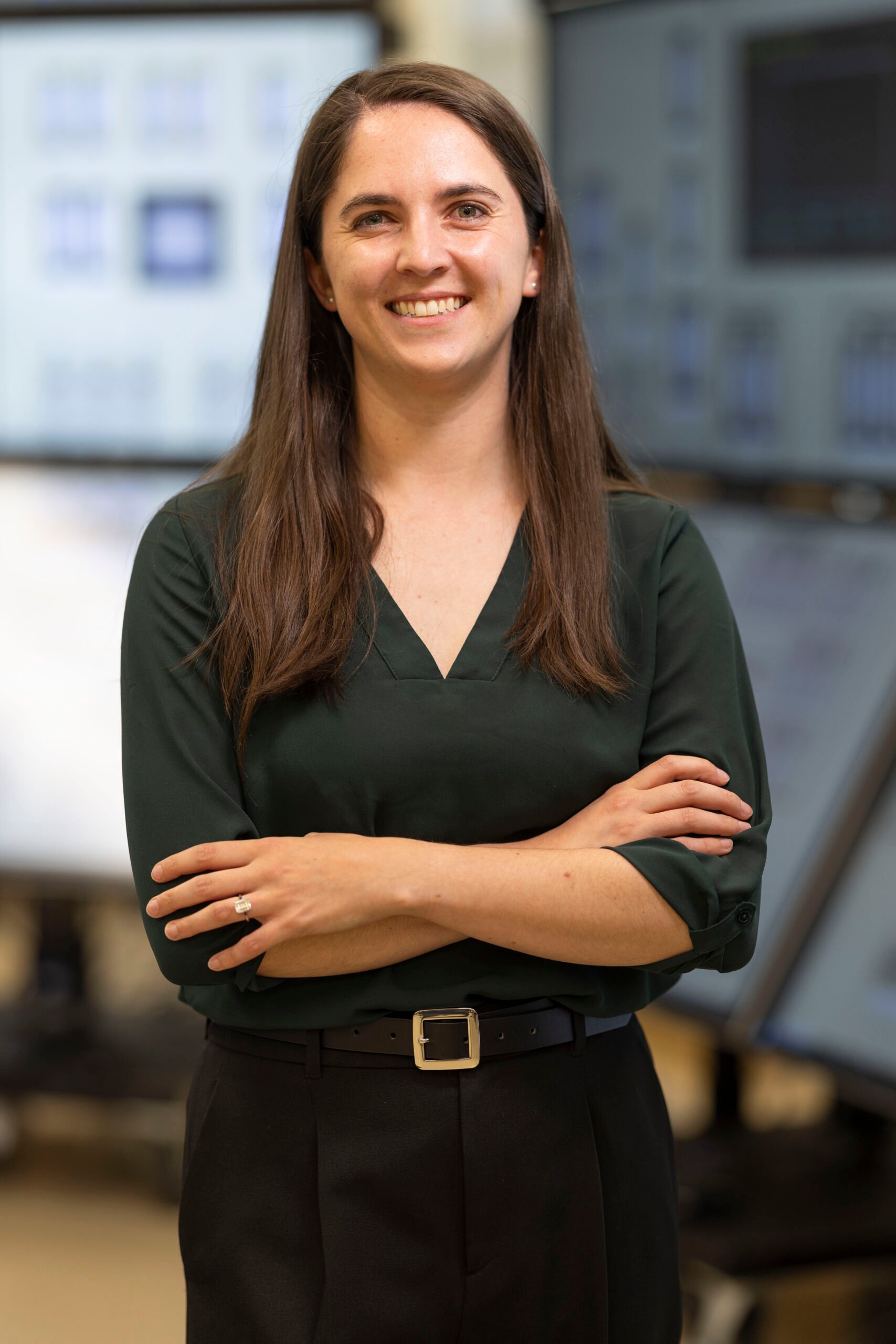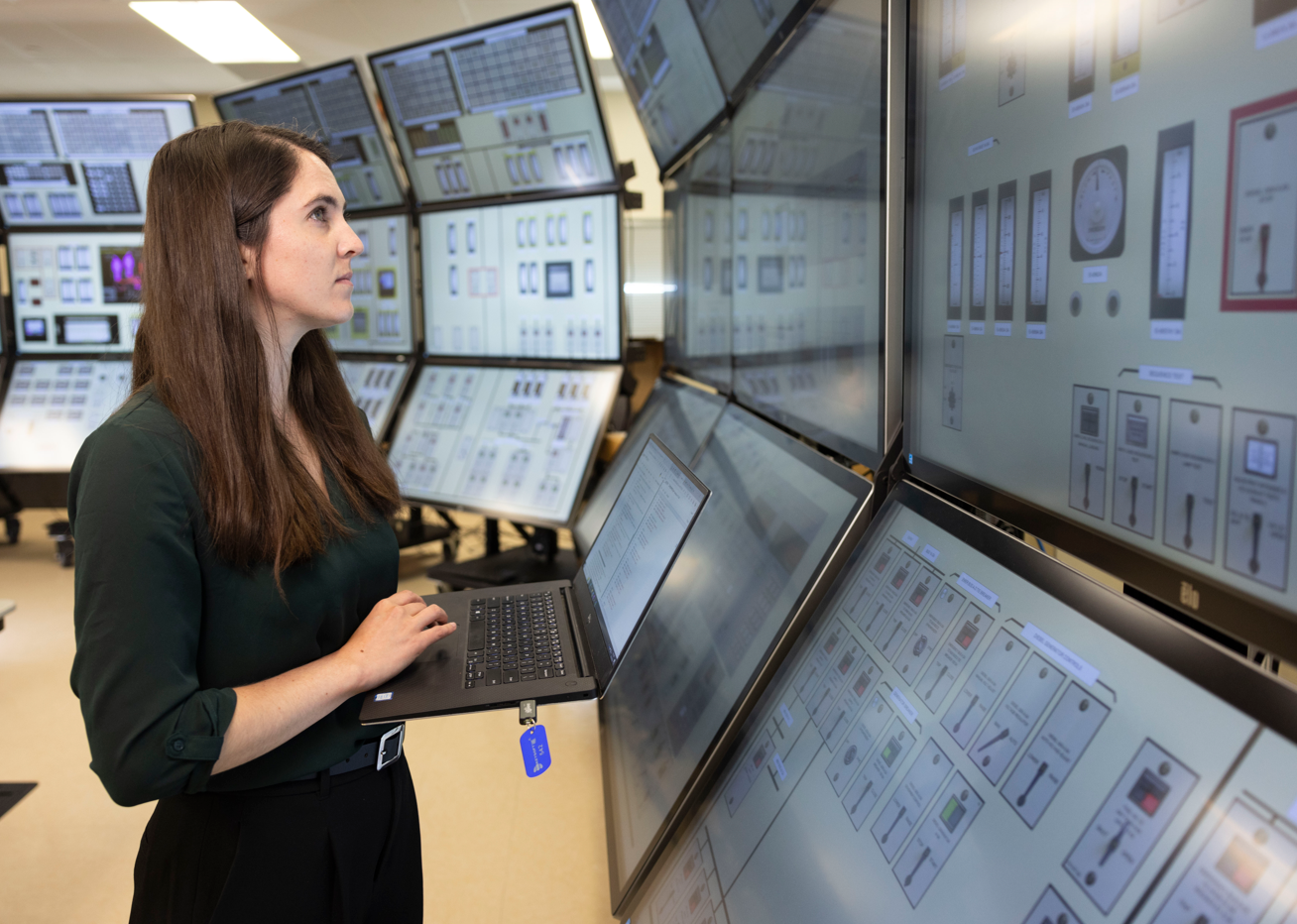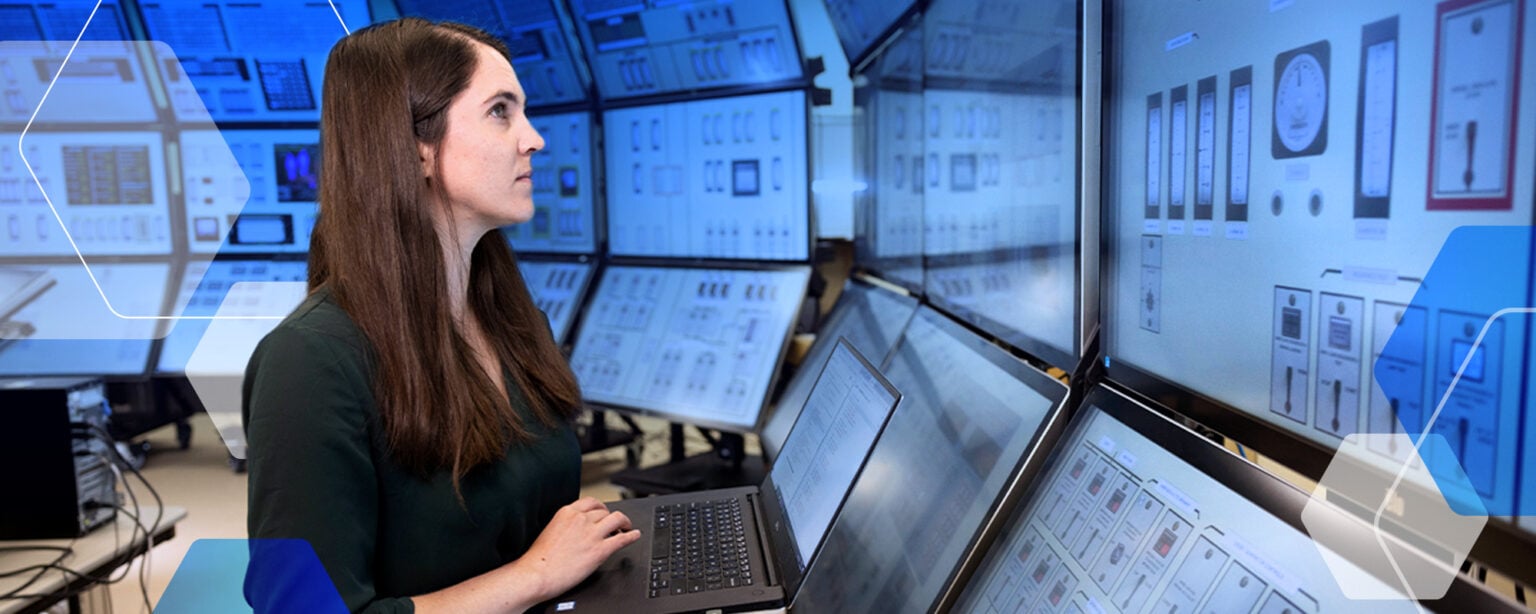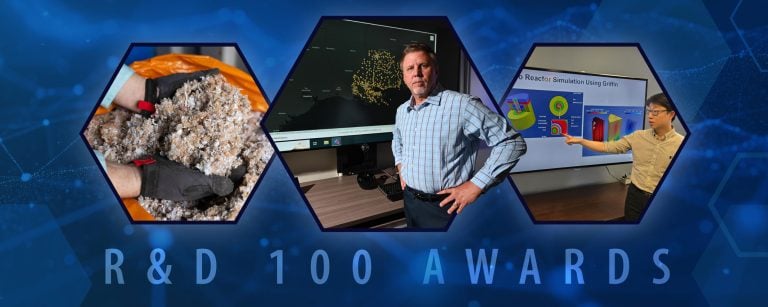The potential for remote operation and autonomous control, which could improve operational efficiency and reduce risk, is a major selling point for some advanced nuclear technologies. Take microreactors, for example. These small nuclear reactors are designed to be able to operate independently from the electric grid with limited local operating assistance — an exciting notion for rural communities or remote industrial applications like seafood processing or mining.
This technology requires the development of complex computer systems. Thankfully, a new generation of nuclear scientists and engineers, like Idaho National Laboratory human factors intern Lauren Fortier, are up to the task.
“I have a nuclear reactor operations background, but I wanted to learn more about nuclear science and engineering research,” said Fortier, graduate student at the Massachusetts Institute of Technology. “At INL, I used my experience to successfully model a nuclear reactor power plant automation program, which could help bring down the cost of nuclear power.”

From industry to simulation
After starting at MIT, Fortier became interested in learning more about national laboratory research capabilities. Her advisor, Sacit Cetiner, an INL senior research and development scientist and the director of the joint INL and MIT Center for Reactor Instrumentation and Sensor Physics, saw an opportunity to help Fortier use her knowledge to tackle advanced nuclear challenges. He offered Fortier a chance to join a project focused on developing a supervisory control system, funded by BT Charitable Foundation through the MIT Office of Foundation Relations.
“Lauren was well-versed in reactor operating procedures, which gave her the optimal set of skills to prove that increased automation in nuclear reactors is a worthy effort,” said Cetiner. “She looked at the problem in a methodical fashion, which allowed her to progress from very simplistic investigations to complex automation demonstrations in just a couple of months.”
Fortier’s project, “Autonomous Operations for Advanced Reactors Using Supervisory Control,” uses a series of codes to perform tasks and monitor the status of all applicable components in a nuclear power plant.
“Since we don’t have access to real advanced reactors or advanced reactor simulators, I used a generic reactor simulator that responds the same way a physical plant reactor does.” said Fortier. “It allows a user to operate and monitor all plant components from a single workstation, making it easy to test and analyze new systems.”
This new tool is based on a mathematical method known as finite state machines (also called finite state automata) and operates like a flow chart. The tool not only makes sure an action has been completed, it will monitor the entire plant. If any plant component malfunctions, operation stops. Since the model can do all this simultaneously, it provides faster diagnosis of a malfunction than with a human operator alone.
Real-world application
In the field, this technology would allow for minimal operating staff for an advanced nuclear reactor, which will be critical to keeping power prices as low as possible.
“Current nuclear power plants have a large supporting workforce, regardless of how much power they produce,” said Fortier. “Even advanced reactors, which will be smaller and produce less power, may require a large on-site staff unless automated functions are used.”
While data-driven statistical approaches, like artificial intelligence or machine learning algorithms, are becoming more prevalent in modern technologies, there is not enough research data to bridge the knowledge gaps in applying artificial intelligence systems to fully automated control rooms. That’s where Fortier’s methodical approach comes in. Researchers can test and verify the tool by comparing it with real reactor operation. This essential steppingstone helps mitigate regulatory concerns with using automated systems in the nuclear industry.

Fortier worked with INL’s human factors department to make sure any programmatic changes in that control room setting, for instance, would still be user-friendly.
“Even something that operates ”autonomously” without human intervention is built, maintained and monitored by humans,” said INL human factors scientist and Fortier’s mentor, Katya Le Blanc. “You can think about all of the different situations that the system might encounter that the automation can’t handle, and then you determine how to bring a human into the loop effectively.”
The economics of automation
As developers strive to build walk-away safe designs, programs like this will be crucial to advanced reactor deployment and the economic longevity of the existing nuclear reactor fleet.
“There’s digital architecture that’s being developed that would really help the nuclear industry from an economics standpoint,” said INL distinguished research economist Jason Hansen. “There’s a lot of people in the nuclear workforce that are going to retire soon and a new generation of potential replacements that won’t find the same technology they learned about in school in a nuclear power plant today.”
Hansen said unless the current fleet updates its systems, potential workers could look elsewhere.
“Combine that with the fact that nuclear power plants are under a tremendous amount of pressure to be competitive because of low natural gas prices,” Hansen said. “So, while it’s important for advanced nuclear to inherit automated functions, it’s also necessary for the current fleet to remain viable.”
These concerns can be addressed by researching nuclear automation more extensively, and Fortier’s project is a great example of this kind of work.
A fond goodbye
“Lauren had a lot of great insights about some of the barriers to getting fully automated nuclear power plants,” Le Blanc said. “She was the exact right person to be taking this on because it’s really rare to have someone who’s going that academic route of controls research but has also operated these systems in real life. That was delightful to witness.”
As Fortier concluded her summer internship, she looked forward to staying connected with her INL mentors and advisors.
“My goal was to get as much exposure as I could, bringing my own hands-on experience to help with the work, but also learning from the experts here,” said Fortier. “I feel like I came away with a better understanding of what we’re doing to move forward with nuclear energy. It was a lot of fun.”





